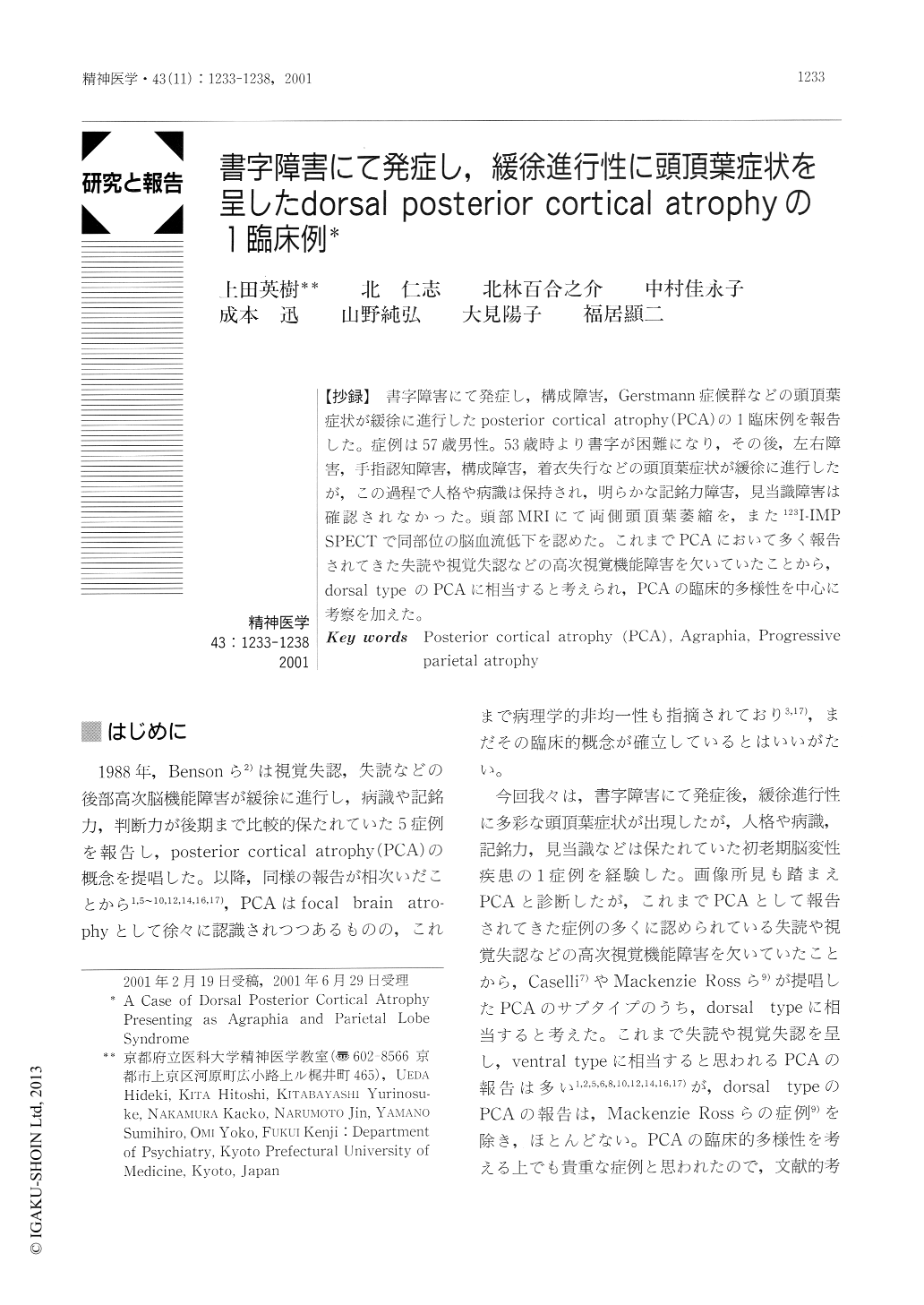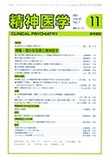Japanese
English
- 有料閲覧
- Abstract 文献概要
- 1ページ目 Look Inside
【抄録】 書字障害にて発症し,構成障害,Gerstmann症候群などの頭頂葉症状が緩徐に進行したposterior cortical atrophy(PCA)の1臨床例を報告した。症例は57歳男性。53歳時より書字が困難になり,その後,左右障害,手指認知障害,構成障害,着衣失行などの頭頂葉症状が緩徐に進行したが,この過程で人格や病識は保持され,明らかな記銘力障害,見当識障害は確認されなかった。頭部MRIにて両側頭頂葉萎縮を,また123I-IMPSPECTで同部位の脳血流低下を認めた。これまでPCAにおいて多く報告されてきた失読や視覚失認などの高次視覚機能障害を欠いていたことから,dorsal typeのPCAに相当すると考えられ,PCAの臨床的多様性を中心に考察を加えた。
We describe a patient with dorsal posterior cortical atrophy (PCA) whose initial symptom was writing difficulty. The patient was a 57-year-old man who noticed difficulty in writing at the age of 53. The writing difficulties gradually worsened, and then progressive parietal lobe dysfunction was manifested. Neuropsychological evaluation revealed Gerstmann's syndrome and severe constructional impairment without any component of Bálint syndrome. Memory, insight into impairment, and judgment were preserved. MRI demonstrated predominant biparietal atrophy and 123I-IMP SPECT showed a remarkable decrease of rCBF in the bilateral parietal region.These clinical and neuroradiological findings are consistent with PCA.
Mackenzie Ross et al. and Caselli proposed a division of PCA into dorsal (occipito-temporal) and ventral (occipito-parietal) subtypes. Based on the preservation of the function mediated by the occipito-temporal pathway combined with the dysfunction mediated by the occipito-parietal pathway, our patient was regarded as having the dorsal type of PCA, which is compatible with the concept of “progressive biparietal atrophy” proposed by Mackenzie Ross et al. Our patient represents the clinical diversity of PCA.

Copyright © 2001, Igaku-Shoin Ltd. All rights reserved.


